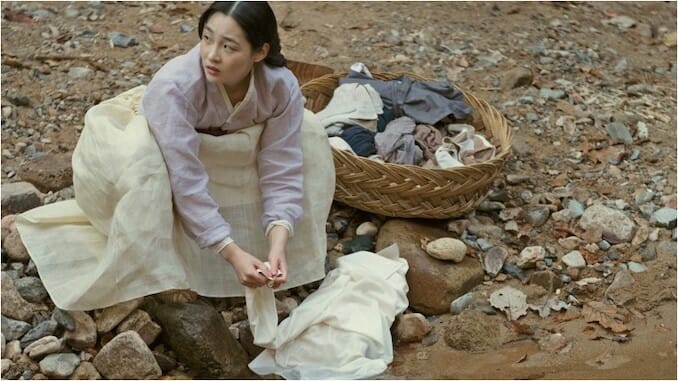How Apple TV+’s Pachinko Made the Most of Its Changes From the Original Book
Photo: Courtesy of Apple TV+
From its opening scene and title cards, Pachinko invokes the concept of intergenerational familial bonds, with a woman we will learn is Sunja’s mother outside Busan, Korea in 1915 begging for a curse to be lifted from her bloodline. She talks about her own mother, how difficult her life was, and how eager her father was to offer her up for marriage. Then we see her great-grandson, Solomon, in a suit in the United States in 1989, the living proof of her labor, and that of so many more family members we will meet over the course of the series.
Like its source material, the New York Times bestseller and National Book Award Finalist by Min Jin Lee, Pachinko takes the long view when it comes to life, love, and family, connecting one generation to the next, like links in a chain or rungs in a ladder, hoping to create something better not only for themselves, but also for their children, their children’s children, and the generations far beyond that whom they will never get to meet.
Unlike the book, Apple TV+’s lush yet intimately observed Pachinko adaptation changes the story’s timeline from a linear chronology, interweaving Solomon’s 1989-era story with Sunja’s journey from the 1930s on. The layering of the timelines reinforces the theme of familial sacrifice for future generations, while also serving as a hook to entice modern viewers, especially those who may be less familiar with this particular slice of Korean and Japanese history. It’s not an entirely novel choice for a book-to-screen adaptation, but creator Soo Hugh and her team have perhaps made the best and most deliberate use of it, reinforcing the story’s themes and capturing the spirit of the book with their editorial choices.
As the show cuts back and forth between grandmother and grandson, reinforcing the theme of familial sacrifice for future generations, a basis for the East Asian notion of filial piety is clear. We see precisely what Sunja and other relatives have both sacrificed and endured in order for Solomon to get where he is, making his disdain for the pachinko parlor and other aspects of their life sting all the more. It gives us beautiful moments like Sunja as a young woman preparing kimchi outside Busan, Korea in the 1910s intercut with Sunja doing the same thing in her old age in Osaka, Japan in 1989. Or more stirring moments, like young Sunja realizing she is pregnant at the same time as older Sunja realizes her beloved sister-in-law Kyung-hee is dead, juxtaposing a life leaving the world with a life entering it.
It’s the kind of choice that would be a bit of a mess to read but is gorgeous in a visual medium, and it hooks viewers in right from the start. Flipping back and forth through time like this can be more difficult when it comes to the written word, and usually works best in books when it’s done chapter by chapter since those beautiful moments of visual juxtaposition can be too jarring to set up in writing.
-

-

-

-

-

-

-

-

-

-

-

-

-

-

-

-

-

-

-

-

-

-

-

-

-

-

-

-

-

-

-

-

-

-

-

-

-

-

-

-








































